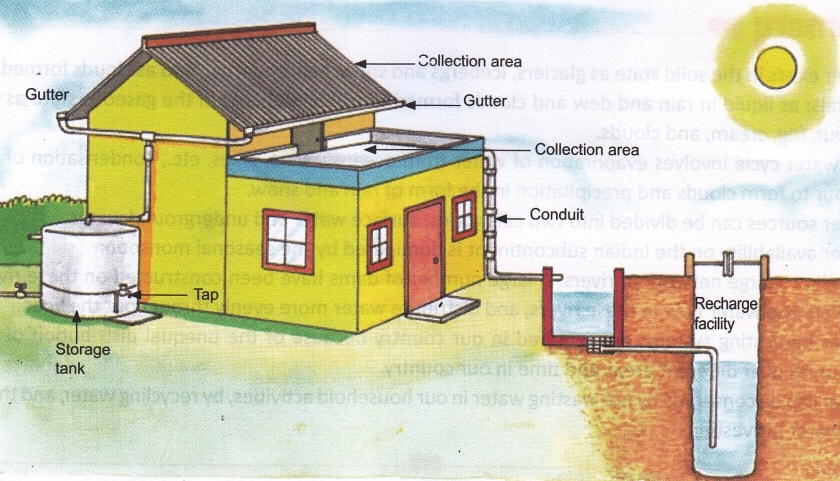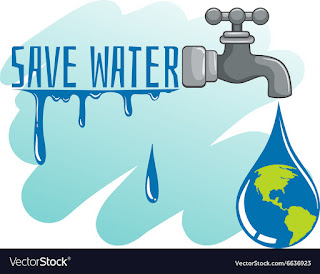Rainwater Harvesting: It’s a surprising but harsh reality — during the rainy season in India, some regions face floods, while others suffer from severe drought. Even with sufficient rainfall, people often struggle for every drop of water. In many areas, this imbalance leads to conflicts and water crises.
Why? Because we fail to capture and conserve rainwater, letting it wash away and become contaminated. Meanwhile, we over-exploit groundwater without giving nature a chance to recharge it. This reckless practice has caused a sharp decline in groundwater levels, triggering widespread water scarcity.
According to estimates, around 1.4 billion people worldwide lack access to safe drinking water — and rainwater harvesting offers a sustainable solution.
Table of Contents
⏳ Historical Background of Rainwater Harvesting
Rainwater harvesting isn’t a new idea. It dates back thousands of years:
- 🏺 Petra, Jordan (7th century BC): Archaeological findings show systems used to store rainwater.
- 🏰 Sigiriya, Sri Lanka (425 BC): Rock catchment systems are part of the World Heritage.
- 🏜️ Thar Desert, Rajasthan (India): Excavations revealed ancient rainwater storage systems from the Harappan civilization (4500 years ago).
Countries like Israel, Singapore, China, and Australia have long adopted rainwater harvesting. Now, India must take urgent steps to implement this technique nationwide.
💡 What is Rainwater Harvesting?

Rainwater harvesting is the process of collecting, storing, and using rainwater for future use — typically from rooftops, roads, or open spaces. It can be used for:
- Irrigation
- Domestic use (after purification)
- Livestock
- Industrial use
- Even drinking, with proper treatment
❗ Why is Rainwater Harvesting Needed?
- Rapid groundwater depletion due to overuse
- Urban flooding from poor drainage systems
- Unequal water distribution
- Cost-effective solution for water storage
- Tackles both water scarcity and excess rainfall
📍 Where is Rainwater Harvesting Most Effective?
Rainwater harvesting is especially suitable in areas with:
- Low or polluted groundwater
- Uneven or mountainous terrain
- Drought- or flood-prone zones
- Saline or mineral-heavy water
- Expensive or limited water supply
🔧 How is Rainwater Harvested? (5 Effective Methods)
1. 🏠 Rooftop Rainwater Harvesting
Rainwater from rooftops is directed via gutters into tanks or recharge pits. Simple filtration (sand, gravel, and stones) makes it suitable for household use.
💧 A 1,000 sq. ft. roof can collect up to 100,000 liters of water during a rainy season!
2. 🌳 Surface Water Collection Systems
Captures rainwater runoff before it reaches drains. Stored in:
- Wells
- Reservoirs
- Ponds
- Natural tanks
3. 🏞️ Check Dams & Large Dams
Constructed to collect and store rainwater for:
- Agriculture
- Power generation
- Urban supply
4. 🕳️ Underground Recharge Pits
Water is diverted into deep pits filled with stones, gravel, and sand, recharging groundwater naturally.
5. 🚰 Water Storage Reservoirs
Water is stored in small ponds or reservoirs for agricultural use. It may be contaminated, so not ideal for direct consumption.
💧 How to Save Water at Home – Easy Tips
- Collect rainwater in buckets or tanks
- Turn off taps while brushing or washing
- Fix leaking faucets immediately
- Reuse RO, vegetable-washing, and laundry water for plants 🌿
- Use water-efficient appliances
✅ Benefits of Rainwater Harvesting
| 🌟 Advantage | 💬 Description |
|---|---|
| ✅ Reduced groundwater dependence | Store water naturally instead of depleting aquifers |
| ✅ Low-cost water supply | Minimal investment for long-term use |
| ✅ Environmentally friendly | Reduces runoff and soil erosion |
| ✅ Water for all | Solves urban-rural water inequality |
| ✅ Improves groundwater quality | Recharges aquifers with pure rainwater |
| ✅ No evaporation loss | Water stored in soil is preserved |
| ✅ Free from harmful salts | Naturally pure and usable |
⚠️ Precautions for Safe Rainwater Use
- Clean tanks and gutters regularly to prevent algae/mosquito growth
- Filter harvested rainwater before use
- Store in non-toxic, UV-resistant tanks
- Boil or treat water before drinking
📚 FAQs – Frequently Asked Questions
❓ What is rainwater harvesting in simple words?
It is the process of collecting rainwater and storing it for later use instead of letting it go to waste.
❓ Can harvested rainwater be used for drinking?
Yes, after filtration and boiling or treatment, rainwater can be safe for drinking.
❓ Which is the best method for rainwater harvesting?
For homes, rooftop harvesting is the simplest and most effective. For larger areas, dams and recharge pits work well.
❓ Why is rainwater harvesting important in India?
Because India faces both seasonal floods and droughts, and groundwater depletion is a growing crisis.
Also read

I am a Professional Civil & Structural Engineer having more than 4 years of experience in Engineering, Procurement and Construction industry. Here i sharing the latest updates of EPC Projects and Construction News.

